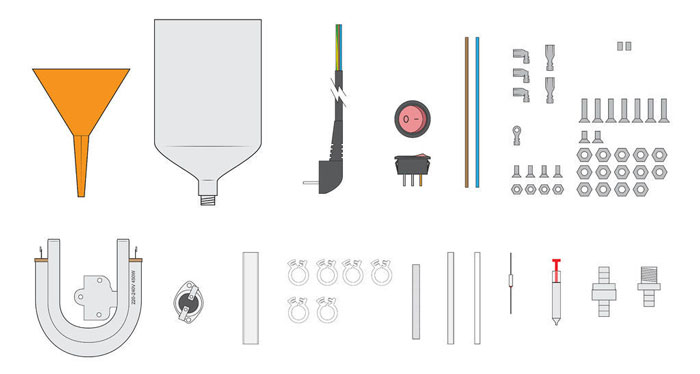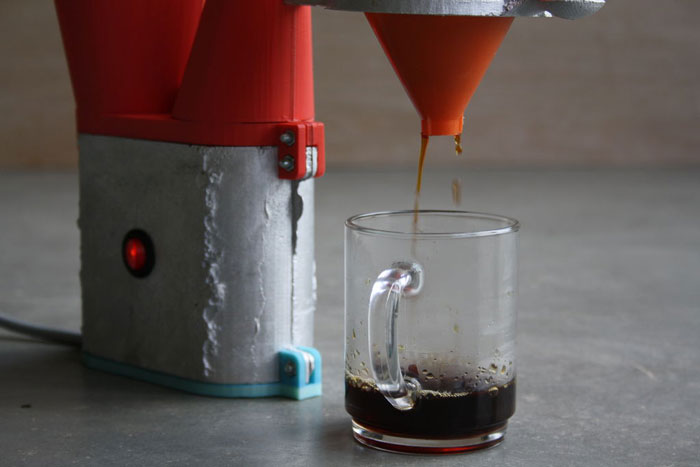With this new Instructable you can create a sustainable coffee maker using recycled materials and easy to replace parts. This may seem like a lot of work for a machine that you can purchase for $20.00, but what happens to that cheap coffee maker when a part goes out?
Like everyone, you would just throw it away and buy another one wouldn’t you? Now I’m not saying that you need to start making all of your home appliances, but projects like this illustrate how disposable so many of the things that we use daily have become to us. This Instructable is probably not for novice makers as you will need to cast your own aluminium housing for the heating element and do some minor wiring and electrical work. It may be a little time consuming, but it doesn’t really look that difficult.
Instructable user Siemenc created a highly detailed guide that walks you through even the most complicated aspects of this build, including relatively simple directions for sand casting your own aluminium parts from CNC mill waste, old cans and foil. He melted the scrap down in a furnace created from an old fire extinguisher using a guide from a different Instructable. He then used oil-based sand to cast the aluminium case around the 3D printed mould. While you can use plastic to house the heating element, casting it out of aluminium is safer and gives the coffee maker a sturdy and stable base.
He chose to use new parts purchased for this guide rather than reuse scrap machine parts so any piece that he included in his guide would be easy to replace and not dependent on finding the same used parts. This not only makes it easier for people following his guide, but it means that you shouldn’t have to adjust the 3D printed part files in order for everything to fit together properly.
The filament used for the 3D printed parts was from Filabot and is made from recycled sources. Although due to the inconsistency of the recycled printing material Siemenc had some difficulty in maintaining consistency of colour and print quality. He settled on the red filament because it was the only colour that didn’t give him any problems, so you may need to do some test prints in order to make sure that the material is up to your standards.
The finished products may look a little DIY, but it also has a simple elegance to it and really wouldn’t look out of place in any modern kitchen. And of course everything on Instructables is completely open source, so users are encouraged to add to the project’s design and make it better, so head on over to Instructables and get started.






